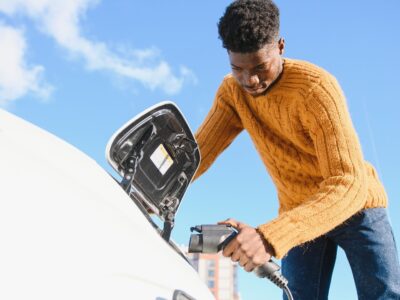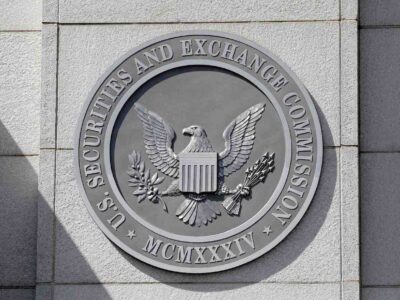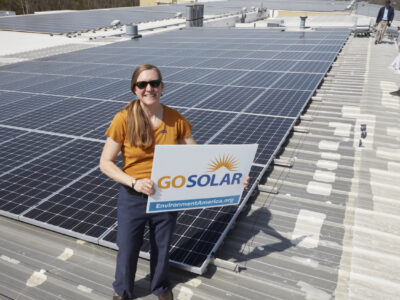More beverage companies are trying to get off single-use plastic bottles and metal cans to reduce the rate of waste going into landfills. Even with ample recycling programs in the U.S. and Europe, there is still a need to find a sustainable and less-harmful alternative. Carlsberg Group out of Denmark might have an ideal solution: plant-based, polyethylene furanoate (PEF)-lined paper bottles.
Unveiled this August at SailGP in Copenhagen, a sailing competition that holds the moniker of the world’s most climate-positive sport, Carlsberg’s new plant-based bottles are making waves in the beer industry. Earlier this year, the company revealed a pilot program of 8,000 bottles launched across eight Western European countries with resounding success.
The bottle is comprised of wood fibers while the inside is lined with PEF polymer to keep it from withering due to the liquid.
“Identifying and producing PEF as a competent functional barrier for beer has been one of our greatest challenges — so getting good test results, collaborating with suppliers, and seeing the bottles being filled on the line is a great achievement!” said Stephane Munch, Carlsberg’s vice president of development. Developed by the company’s renewable chemistry partner Avantium, this bottle can change the discourse around paper beverage receptacles.
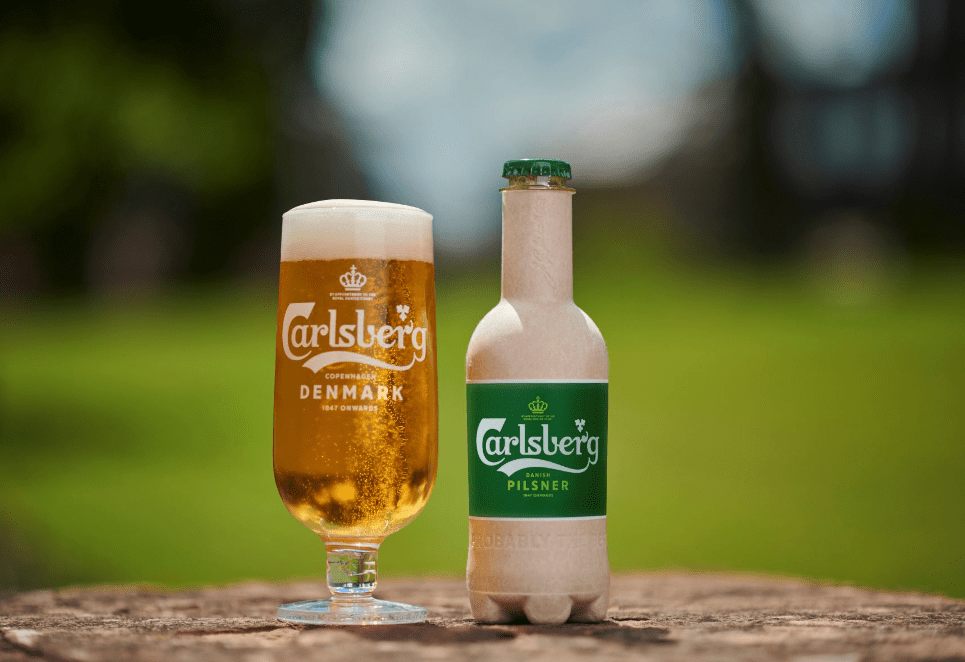
When testing began in 2019, the company played around with two prototypes. Researchers lined one fiber bottle with a PEF polymer, the other with traditional Polyethylene terephthalate (PET) polymers. The beermaker wanted a bottle that was not only sustainably produced but could be recycled and degradable. The PEF-lined bottle stood out for its 100% recyclability and being biodegradable. It can even be sorted into plastic recycling like traditional beer bottles, and it will degrade in nature should it not reach a recycling plant. With the success of the pilot program, Carlsberg is on track to achieve its company goal of hitting a zero carbon footprint by the next decade.
The Danish beer company is not alone in this venture to switch to plant-fiber bottles. During the first round of testing, a new manufacturer called Paboco, shorthand for Paper Bottle Company, emerged as the first supplier for Carlsberg. While Avantium helped perfect the PEF liner — made from raw materials, not petroleum-based like PET — Paboco developed the actual bottle. Its work has landed the company partnerships with Coca-Cola and Absolut Vodka, even shampoo bottles for L’Oreal. The hope is these bottles will catch on in other markets and will help phase out metal cans and glass receptacles.
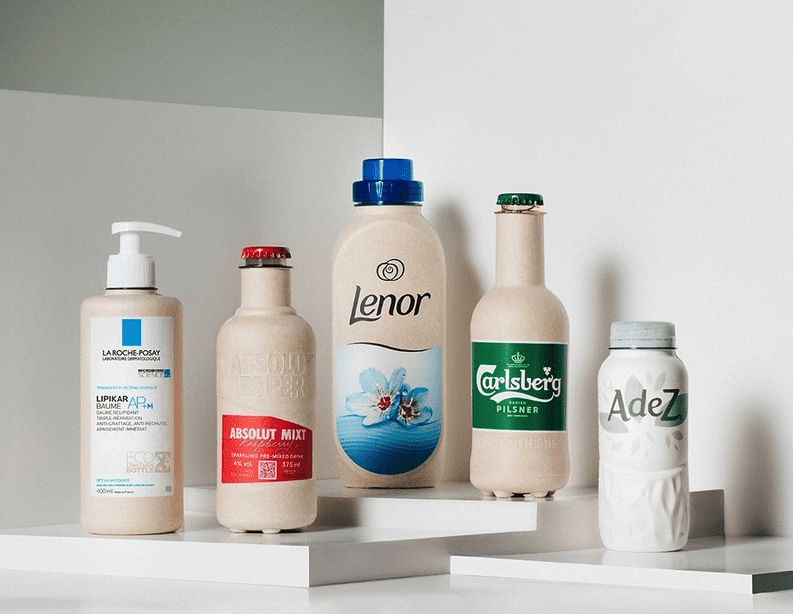
On top of distributing their famous beer in these fiber bottles, Carlsberg is working toward hitting zero waste, zero emissions, and zero alcohol-related accidents.
The Together Toward ZERO campaign is an ongoing environmental action plan to produce beer with zero waste water, ship it with zero emissions, and promote responsible consumption for zero alcohol-related deaths.
“We’re committed to delivering zero carbon emissions and halving water usage at our breweries by 2030. As a first action, we’ll switch to 100% renewable electricity by 2022 and cooperate with partners to protect shared water resources in selected water-scarce areas,” said Cees ’t Hart, Carlsberg CEO. These efforts include sourcing organic barley grown from regenerative practices for brewing. The beer maker also teamed with World Wildlife Fund (WWF) to study more proactive wastewater management. A sustainable brewery using a sustainable bottle just makes sense.
With more fiber bottles on the way, it seems likely this will be Carlsberg’s main packaging source for the future. Five fiber bottles can be produced with the same carbon footprint as one single-use plastic bottle. If the company has figured out how to stop its bottles from crumpling under the weight of condensation and liquid like paper straws, Carlsberg may have ushered in a new era for beverage packaging.


